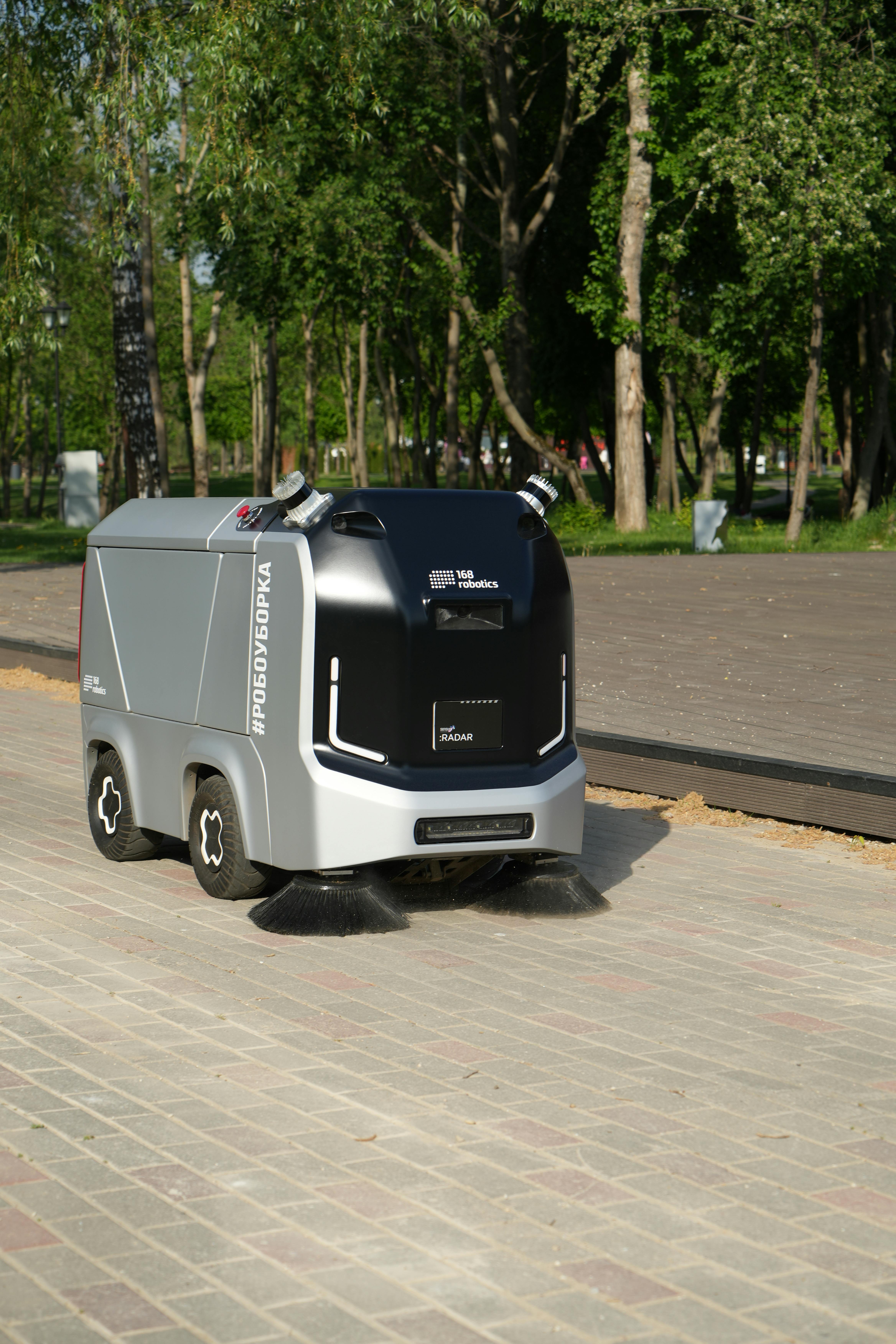🕓 Estimated Reading Time: 4 minutes
Overview
The global landscape of autonomous driving is witnessing unprecedented acceleration, underscored by recent reports highlighting a monumental surge in revenue for leading players. One such entity, WeRide, a prominent L4 autonomous driving technology company, has announced an astonishing 836% increase in its robotaxi revenue. This remarkable growth signifies a pivotal moment for the company and the broader autonomous mobility sector, reflecting maturing technology, expanding service areas, and growing consumer adoption.
The surge, reported by Benzinga in a press release dated July 16, 2025, positions WeRide as a key player in the commercialization of self-driving services. This financial milestone is not merely a number; it represents the tangible realization of years of research, development, and strategic global expansion efforts aimed at bringing driverless technology from testing grounds to daily urban life. The firm's ability to significantly boost its robotaxi revenue growth suggests a critical shift towards the economic viability of autonomous transport solutions, setting a precedent for industry competitors and market expectations.

Background & Context
WeRide, founded in 2017, has rapidly established itself as a frontrunner in the intensely competitive autonomous driving domain. Headquartered in Guangzhou, China, the company holds extensive operational experience across multiple cities globally, including Guangzhou, Shenzhen, Shanghai, Beijing, and Abu Dhabi. Its diversified portfolio spans robotaxis, robobuses, robosweepers, and autonomous freight services, showcasing a comprehensive approach to intelligent mobility solutions.
The reported 836% surge in robotaxi revenue growth is a testament to WeRide's aggressive market penetration and technological advancements. According to the Benzinga press release, this figure reflects a period of significant operational scaling and increased ridership in its deployed regions. The company's strategy has focused on obtaining necessary permits, establishing robust operational frameworks, and ensuring the safety and reliability of its L4 autonomous vehicles. This involves rigorous testing, data collection, and continuous improvement of its AI algorithms and hardware systems.
Historically, the autonomous driving sector has been characterized by substantial investment without immediate, clear returns. WeRide's latest financial disclosure marks a potential turning point, demonstrating that commercialization is not only feasible but can also yield significant revenue streams. The company's expansion into the Middle East, particularly in the UAE, highlights its strategic vision for international growth beyond its domestic Chinese market. Such global deployments are crucial for validating the versatility and adaptability of its self-driving technology across varied regulatory environments, traffic conditions, and cultural contexts.
Implications & Analysis
The substantial revenue growth reported by WeRide carries profound implications for the future of urban mobility and the autonomous vehicle industry. Firstly, it signals a strong market acceptance for robotaxi services where they are available. Consumer confidence, spurred by improved safety records and convenience, appears to be translating into higher ridership and, consequently, increased revenue. This is a critical indicator for investors who have long sought clear paths to profitability in a capital-intensive sector.
Secondly, the 836% surge underscores the potential for exponential growth once an autonomous driving system reaches a certain level of maturity and regulatory approval. Unlike traditional transportation models, which are often constrained by human driver availability and labor costs, robotaxi services can scale rapidly by simply deploying more vehicles and expanding operational zones. This efficiency offers a compelling long-term economic advantage.
'The significant robotaxi revenue growth highlights the accelerating commercialization phase of autonomous driving technology. It moves beyond theoretical potential to demonstrated market demand and operational efficiency, setting a new benchmark for the industry.'
The success of WeRide's global expansion strategy, particularly its operations in the UAE, demonstrates the adaptability of its technology. Operating in diverse environments—from the dense urban landscapes of Chinese megacities to the unique traffic patterns and infrastructure of the Middle East—validates the robustness of WeRide's autonomous stack. This cross-cultural and cross-geographical competence is vital for any company aspiring to be a global leader in self-driving technology. Furthermore, the company's multi-application strategy, encompassing not just robotaxis but also other autonomous vehicle types, indicates a diversified revenue stream approach, mitigating risks associated with reliance on a single service model.

Reactions & Statements
While specific corporate statements from WeRide beyond the Benzinga press release are not immediately available, the reported robotaxi revenue growth is expected to generate significant positive reactions from investors, analysts, and the wider technology community. Such substantial financial performance data provides concrete evidence of progress in a sector often criticized for its slow commercialization.
For investors, the robust revenue surge signals a stronger return on investment potential, potentially attracting further capital injections for WeRide's continued development and global expansion. Industry analysts are likely to view this as a positive indicator for the overall health and future trajectory of the autonomous driving market, potentially prompting a re-evaluation of valuation models for autonomous vehicle companies. Competitors, while recognizing the challenging nature of the market, will undoubtedly observe WeRide's strategies closely, especially its operational efficiency and market penetration tactics. The successful revenue generation could intensify the race for market share, encouraging rivals to accelerate their own commercialization efforts and explore new operational models.
Regulatory bodies and city planners may also take note, as demonstrated revenue success can serve as a powerful argument for broader adoption and integration of autonomous services into urban infrastructure. It suggests that robotaxis are moving beyond novelty and becoming a viable, scalable component of future transportation systems.
What Comes Next
The significant increase in robotaxi revenue growth positions WeRide for an even more aggressive pursuit of its strategic objectives. Expect the company to leverage this financial momentum to further expand its operational footprint. This will likely include launching services in new cities within its existing markets and exploring fresh international territories as part of its ongoing global expansion. The acquisition of additional operating permits and the scaling of its vehicle fleet will be critical steps in this process.
Technological advancements will remain a core focus for WeRide. As its vehicles accumulate more real-world operational miles, the volume of data collected will be invaluable for refining its autonomous driving software, enhancing safety protocols, and improving the overall user experience. WeRide may also continue to diversify its service offerings beyond robotaxis, strengthening its robobus, robosweeper, and autonomous freight segments to capture a larger share of the intelligent logistics and public transport markets.
Collaboration and partnerships will also play a crucial role. WeRide has historically worked with major automotive manufacturers and mobility service providers. This trend is likely to continue, potentially leading to joint ventures or strategic alliances that could accelerate deployment, reduce development costs, and provide access to new markets. The long-term vision for autonomous driving is to create a seamless, efficient, and safe transportation ecosystem, and WeRide's sustained financial performance will enable it to invest more heavily in realizing this vision, pushing the boundaries of what autonomous technology can achieve.
Conclusion
WeRide's reported 836% surge in robotaxi revenue growth is a powerful indicator of the increasing maturity and commercial viability of the autonomous driving industry. It reflects not only the technological prowess of WeRide but also growing public acceptance and demand for driverless mobility services. This significant financial milestone provides tangible proof that years of substantial investment in autonomous driving are beginning to yield meaningful returns.
The company's strategic approach to global expansion and its diversified application of autonomous technology position it as a formidable force in shaping the future of transportation. As WeRide continues to scale its operations and refine its technology, its success will undoubtedly serve as a benchmark for the entire industry, accelerating the transition towards a fully autonomous and interconnected mobility landscape. The road ahead for autonomous vehicles remains complex, but WeRide's latest performance data offers a clear sign of progress and a promising outlook for driverless innovations globally.
Comments
Post a Comment